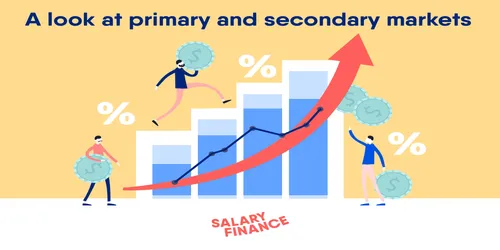Trade transactions depend on a Standby Letter of Credit (SLOC), which reduces buyer and seller risk. Trade treaties commonly include SLOCs to overcome payment uncertainty. When a buyer fails to satisfy contract payment requirements, the SLOC issuing bank pays on their behalf. The vendor is guaranteed the agreed-upon funds even if the buyer defaults.
The SLOC functions as a guarantee, strengthening international commerce trust. It gives vendors financial certainty, allowing them to fulfill their commitment. This approach reduces financial risks connected with non-payment or delayed payment, making trade transactions easier and stabilizing global commerce. SLOCs are becoming typical in trade agreements to prevent payment interruptions and uncertainty.
Working on Standby Letter of Credit
International trade relies on the Standby Letters of Credit to secure and expedite payments. The buyer usually pays after obtaining goods or services under a contract. The buyer may not pay due to insolvency, political unrest, or cash flow issues. Standby letters of credit provide financial security in such instances.
Buyers get a bank standby letter of credit to ensure fast payments to sellers in case of failure. In the event of buyer non-payment, the SLOC issuing bank pays the beneficiary or seller. As a debt, the bank requires the buyer to return the amount. Depending on the bank, this service has
varied interest rates and costs.
Fees are usually calculated from SLOC activation to expiration in 360 days. For example, Scotiabank SLOC may feature a 1.10% charge and a 2% annual interest rate. Formal agreements control standby letters of credit terms. These terms require the vendor to meet bank payment obligations. Additionally, the agreement defines the documentation the seller must produce to the bank to fulfill payment terms. It's vital to realize that conventional and standby letters of credit serve different purposes. Both financial tools facilitate commerce, but a normal letter of credit guarantees seller payment upon contractual duties. Standby letters of credit are supplementary payment mechanisms that activate only when the buyer defaults.
Standby Letter of Credit Vs Letter of Credit

The functioning, purpose, and international trading context of a Standby Letter of Credit (SLOC) and a Standby LOC differ. Both are bank-issued financial instruments for buyer-seller transactions, but their mechanics and ramifications differ.
The vendor receives a Letter of Credit from a bank, ensuring that the buyer will pay on time for products or services. A LOC ensures the financial institution facilitates buyer-seller payment according to the contract. Usually, the vendor is paid after delivery.
Regular Letters of Credit do not have performance criterion provisions like Standby Letters of Credit (SLOC). These clauses are fundamental to SLOCs, setting payment requirements. A normal Letter of Credit pays upon delivery of goods without further conditions. To distinguish a Letter of Credit from a Standby Letter of Credit, note that an SLOC does not guarantee payment upon delivery. Instead, agreed requirements must be met before payment. This makes SLOCs valuable when the buyer's capacity to pay is unknown or risky.
Standby Letters of Credit are credit facilities; thus, banks only offer them after examining the borrower's creditworthiness. This creditworthiness rating defines the bank's risk tolerance for the buyer, making it an important issuance stage.
Different SLOCs meet international commerce demands. GBC International Bank said financial institutions issue bids, advanced payments, and warranty SLOCs based on buyer needs. These specialized SLOCs give security and assurance to trading settings. The bank guarantees the buyer will satisfy the offer terms if accepted with bid SLOCs. Advanced payment SLOCs guarantee buyer repayment of seller advances. Warranty SLOCs guarantee product quality or performance.
Example
A TV vendo company named Company A deals with Company B, a customer interested in buying $500,000 worth of TVs. Company A asks Company B for a Standby Letter of Credit (SLOC) to secure payment since these two companies have no business history.
Company B requests a Standby Letter of Credit from its bank at Company A's request. The SLOC guarantees Company A that the bank will pay if Company B fails to pay on time.
After receiving the SLOC, Company A delivers the televisions to Company B, giving them 30 days to pay. When the payment date approaches, Company B fails to pay.
Company A contacts the Standby Letter of Credit bank after non-payment. The SLOC agreement requires them to notify the bank of the non-payment issue and submit the necessary evidence. Company A delivered the items as agreed, and the paperwork usually includes delivery confirmation and invoices. After analyzing the evidence, the bank confirms that Company B failed in its payment and pays Company A on its behalf. Paid is $500,000 for delivered TVs. This protects Company A, the SLOC beneficiary, and guarantees it receives payment for the items supplied.
Letter of Credit example is following the agreement's terms and conditions. In the example, if the supplied TVs did not match the stipulated terms, such as size and color, in the SLOC agreement, the bank may not have to pay Company A.
Ways of Obtaining a Standby Letter of Credit

Buyers apply to commercial banks for Standby Letters of Credit (SLOC). The buyer must prove creditworthiness and offer collateral, especially if the default risk is substantial, such as when applying for a loan.
The buyer must apply for a SLOC at a commercial bank. The issuing bank will evaluate the buyer's creditworthiness to calculate SLOC risk. If default risk is considerable, the bank may request collateral.
Banks use collateral to protect themselves against default. The bank usually demands collateral proportional to the SLOC's value. Real estate, stocks, and cash deposits can be collateral.
After the creditworthiness evaluation and collateral, if needed, the buyer submits all SLOC data if approved. The conditions of sale, the default amount, the seller's bank information, and the SLOC's duration are usually included. However, the SLOC agreement must specify any requirements the seller must satisfy to receive the products or services. This guarantees that both parties understand the SLOC terminology.
The paper includes dates, the SLOC guarantee amount, and both parties' signatures. All parties must agree to these terms, making the document legally binding. The buyer, seller, and issuing bank must agree to update or cancel SLOCs, which are irrevocable. In addition, the bank charges the buyer an annual fee while the SLOC is active.




